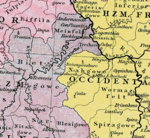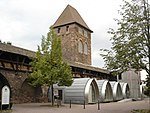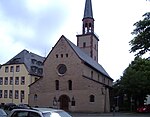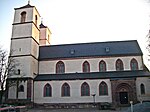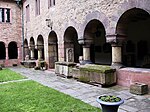Worms Synagogue
1030s establishments in the Holy Roman Empire11th-century synagoguesBuildings and structures in Worms, GermanyGothic architecture in GermanyJews and Judaism in Worms, Germany ... and 6 more
Rebuilt synagoguesReligious buildings and structures completed in 1034Religious buildings and structures in Rhineland-PalatinateRomanesque and Gothic synagoguesSynagogues in GermanyWorld Heritage Sites in Germany

The Worms Synagogue, also known as Rashi Shul, is an 11th-century synagogue located in Worms, Germany. Situated in the northern part of the city center, the synagogue is one of the oldest in Germany. Because of its historical importance and its testimony to the European Jewish cultural tradition through millennia, the Worms Synagogue was inscribed on the UNESCO World Heritage List in 2021 (along with other medieval Jewish cultural sites in Speyer and Mainz).
Excerpt from the Wikipedia article Worms Synagogue (License: CC BY-SA 3.0, Authors, Images).Worms Synagogue
Hintere Judengasse,
Geographical coordinates (GPS) Address External links Nearby Places Show on map
Geographical coordinates (GPS)
| Latitude | Longitude |
|---|---|
| N 49.6336 ° | E 8.3663388888889 ° |
Address
Synagoge
Hintere Judengasse 4
67547 , Worms-Zentrum (Innenstadt)
Rhineland-Palatinate, Germany
Open on Google Maps

